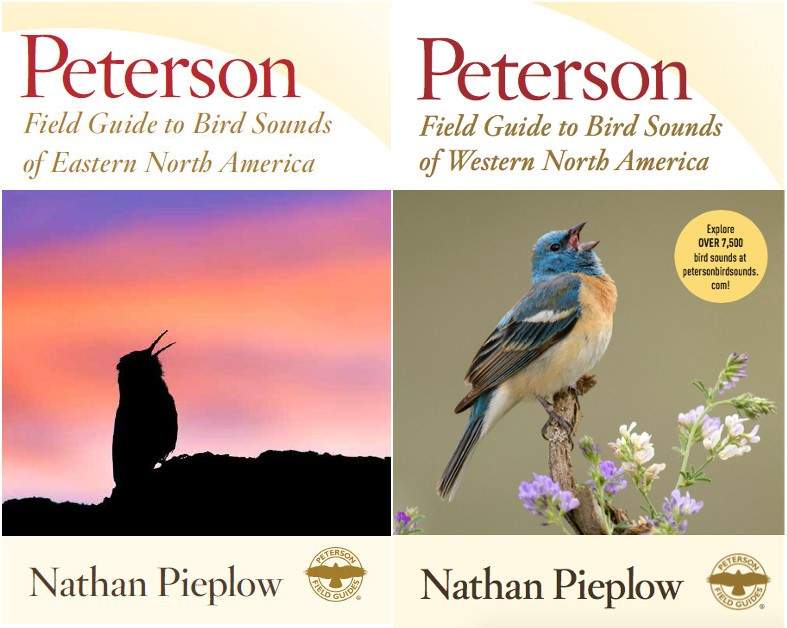Meet the Speaker: Bird Sounds, Alabama, and Me
First of all, let me express how excited and grateful I am to be invited to speak to the Alabama Ornithological Society at the spring 2024 meeting. I have heard stories of legendary Dauphin Island, but I have never visited – and I am particularly thrilled to experience it at the height of spring migration. My home state of Colorado doesn’t have many warblers! (We make up for it in ways that range from longspurs to rosy-finches to grouse.)
This will be my first time officially birding Alabama. I say “officially” because I do have one single solitary bird on my Alabama eBird life list.
The first time I ever visited Alabama was during my senior year of college in 1998. Being typical college students, my friends and I had conceived of a highly questionable plan: a madcap five-day road trip all the way from our campus in western Massachusetts to Mardi Gras in New Orleans and back.
I was thrilled by the plan in part because I had never yet been to any part of the South. I’d grown up in South Dakota and gone to college in New England. A birder since childhood, I knew there wasn’t going to be much opportunity for birding at Mardi Gras, but I resolved to keep my eyes peeled for new birds along the way.
In a two-car caravan, we set off from Massachusetts in the late afternoon and drove through the night, reaching Chattanooga at daybreak. At a gas station pit stop, I started a driving shift through Alabama on interstates 59 and 20. I remember being astonished by how green everything was, even in February. It was my first time seeing magnolia trees. Broad green leaves in the wintertime? It felt exotic and tropical.
My companions weren’t going to let me stop the car for birds, so I scanned the roadsides as I drove. And it paid off. Somewhere in Greene County, a huge bird flapped out of a roadside tree and flew right over the car: my first-ever Black Vulture. It was the first lifer of the trip.
The following day, in Louisiana, I did manage to sneak away for an hour of birding and got some more lifers ranging from Laughing Gull to Carolina Chickadee. Oh, for those early days of birding in a new place, when even the most common birds are brand new and exciting!
Anyway… Black Vulture’s in the bag. What will my second Alabama bird be? I don’t know, but it will come 26 years after the first.
Bird Sounds at the Spring Meeting
At the meeting, I’ll be talking about my favorite part of birding: the amazing sounds of birds.
In the Friday evening workshop, I’ll explain how to make the most of your smartphone. To record and identify bird sounds, you don’t need a 22-inch plastic parabolic microphone like the one I lug around. You can use free apps to record birds, share your recordings online, and even auto-identify the birds you are hearing. If you already have favorite apps you use, bring them and we can discuss – and if you’ve never recorded or identified sounds with your phone, we will get you set up. We will pay particular attention to Merlin Sound ID.
At Saturday’s keynote, “The Language of Birds,” I’ll discuss what birds are actually saying to one another, and how we know. During our short lessons on bird language, you’ll learn common phrases in Red-winged Blackbird ranging from “I love you” to “honey, I’m heading out for a bit.” You’ll learn how to say “I’ve found food” in Cliff Swallow, and how to say almost anything in Ruby-crowned Kinglet. (No, there won’t be a quiz. No, I don’t teach pronunciation.)
Here are just a few of the other questions I’ll be answering:
- What bird species has the largest vocabulary of any species in the world, as far as we know? (It’s common in Alabama—but it’s not a mockingbird!)
- What North American bird species is the most vocally interesting? (There’s a hands-down winner, also common in Alabama.)
- How can a language convey meaning when the words mean nothing? (Some bird languages accomplish this.)
I am very much looking forward to meeting all of you, and the birds of your beautiful state!
Bio
Growing up in South Dakota, Nathan Pieplow got started identifying bird songs by studying the classic “Birding By Ear” field guides in the Peterson series. It wasn’t until 2003, when he faced the frustrations of studying sounds for mis first trips to Mexico and Costa Rica, that he became dedicated to finding new and better ways to learn, describe, and catalog bird sounds. Along the way he became a sound recordist and an amateur ethologist (a student of animal behavior).
He’s not one of those superhuman beings who can identify every singing bird, or discern the nocturnal flight call of a Blackpoll Warbler as it passes overhead in the dark. His high-frequency hearing is getting worse every year, nor does he have a great auditory memory. To learn bird sounds, he wanted more resources: more recordings, better glossaries, deeper discussions. So I set out to create my own resources. These pages are part of the result. The Peterson Field Guide to Bird Sounds is another part. He is a member of the Board of Directors of the Bird Conservancy of the Rockies.
Nathan lives in Boulder, Colorado, where he teaches writing and rhetoric at the University of Colorado. He’s a former editor of the quarterly journal Colorado Birds and one of the developers of the Colorado County Birding Website and the Colorado Birding Trail.

